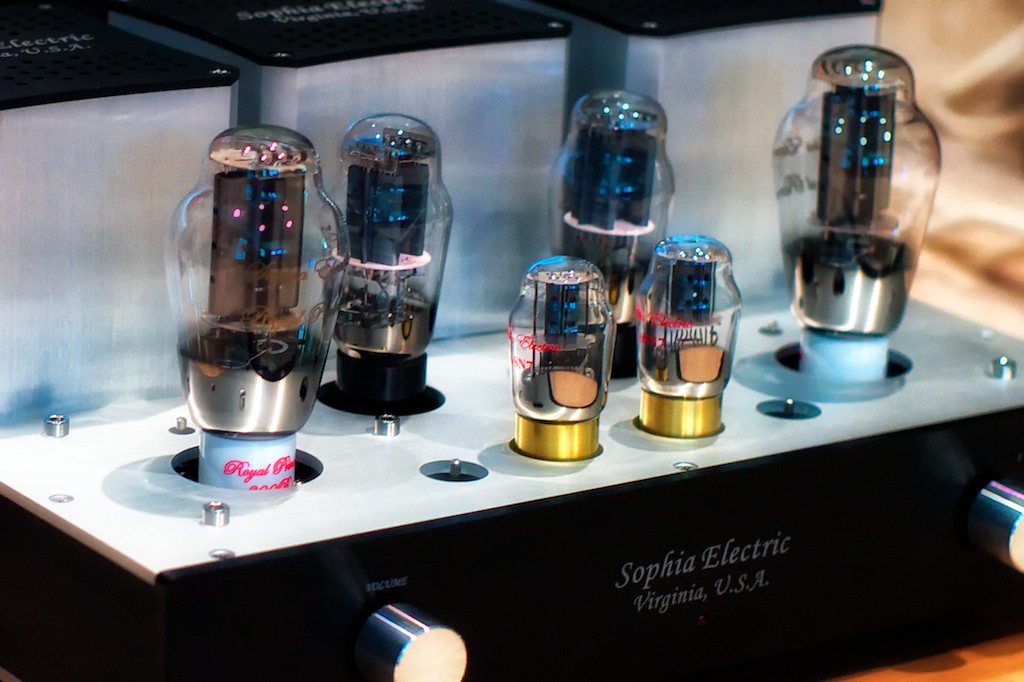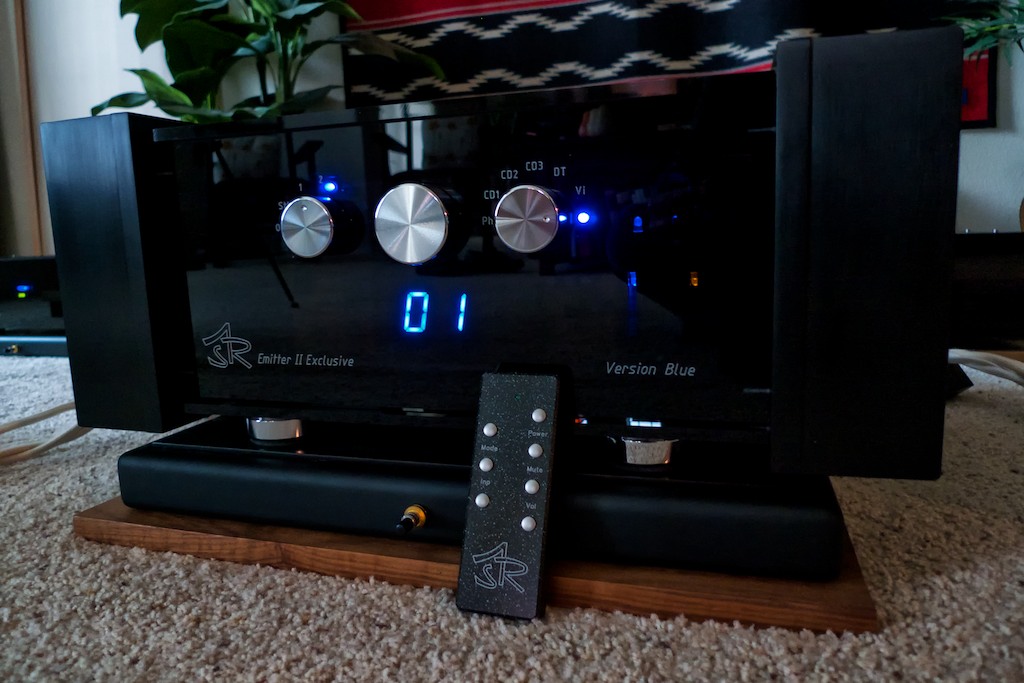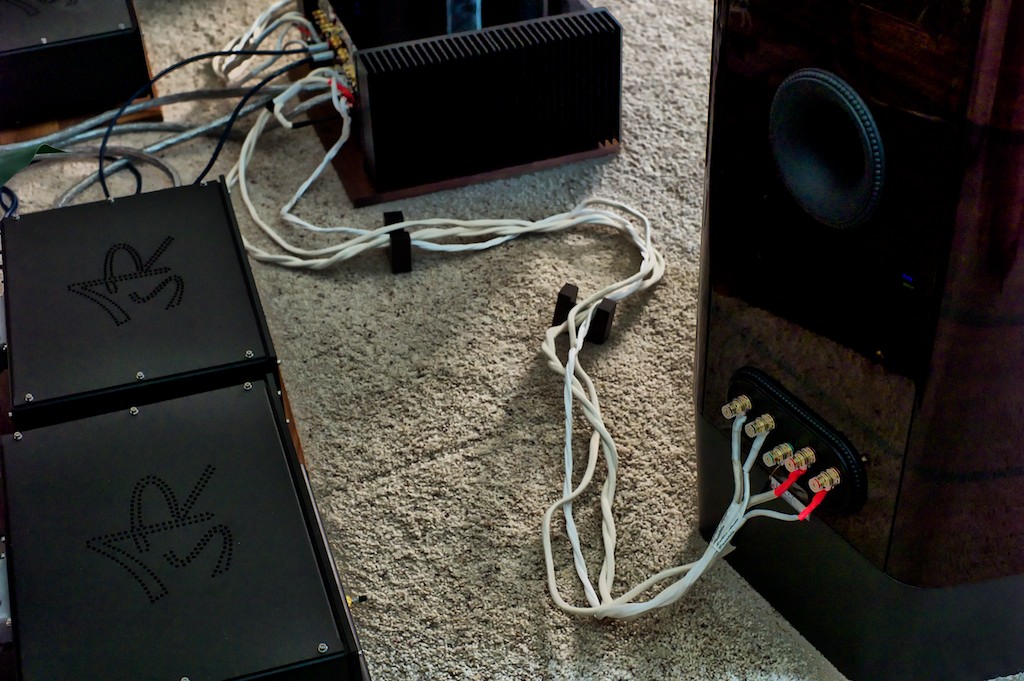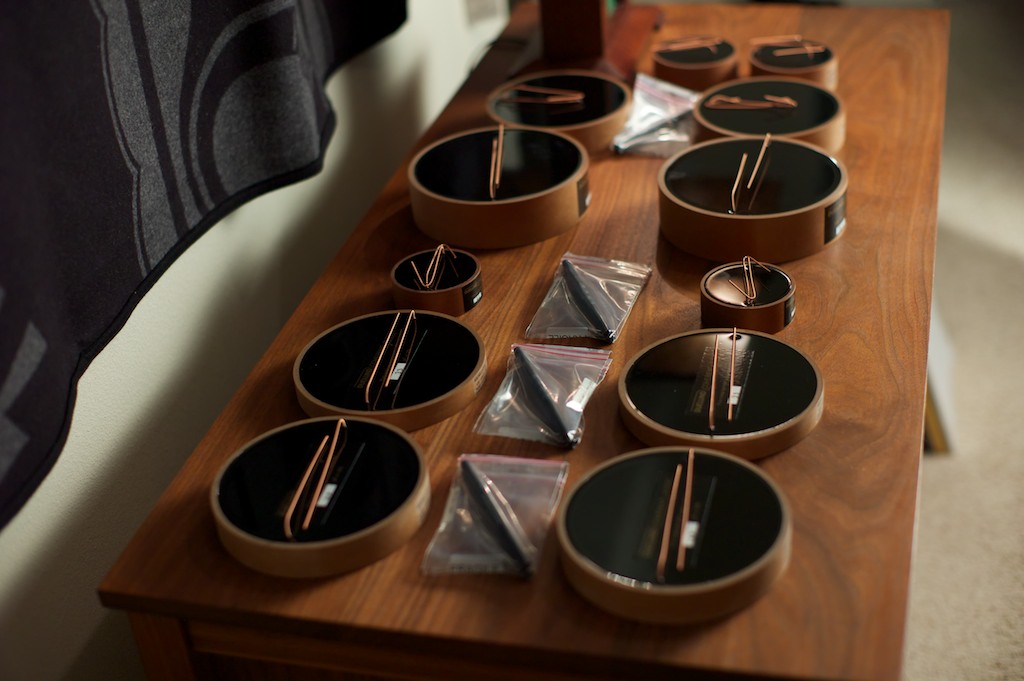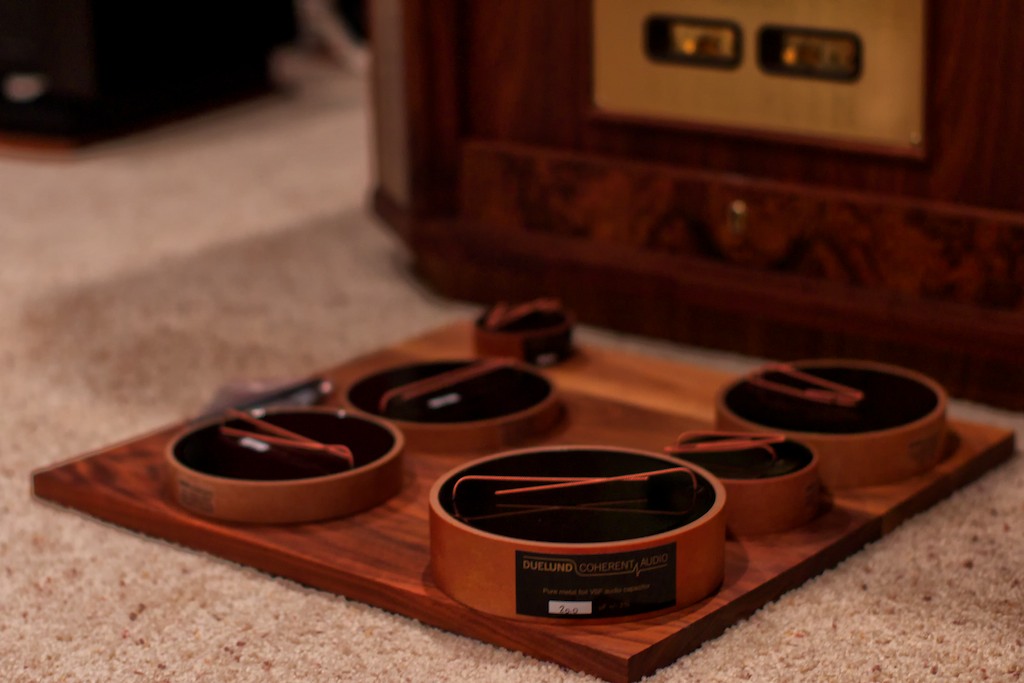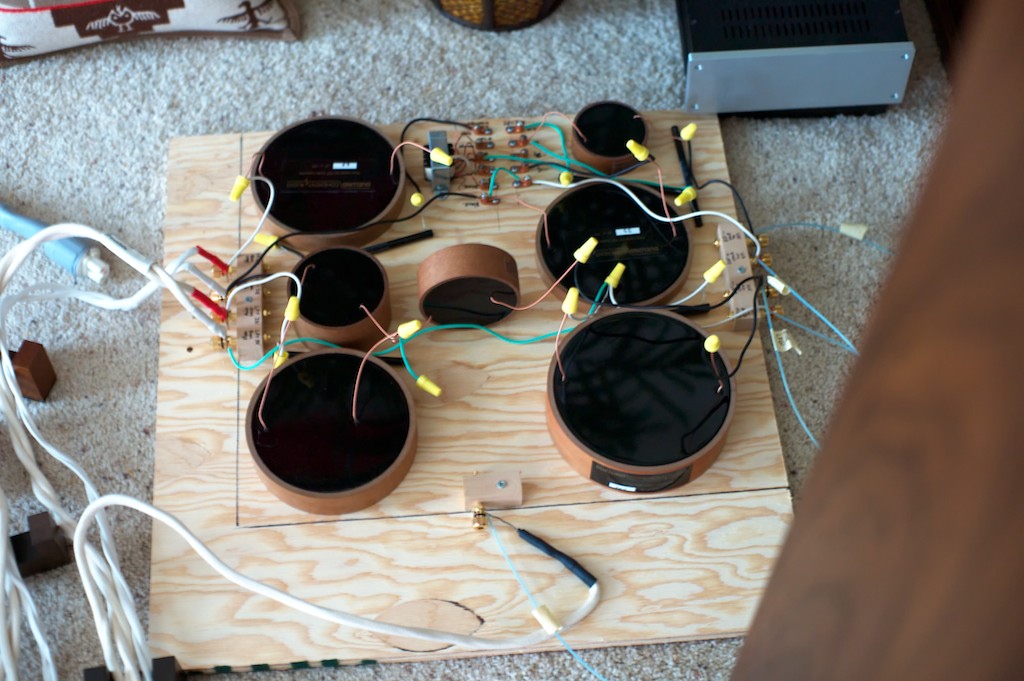I've been listening to the breadboarded versions of the Duelund crossovers on the Westminster Royal SE's this week, in the evenings after I got home from the office, and man, what a revelation!
I decided to take today off and get some more work done on Duelund-WRSE Project. Before getting started on what I need to do today, I have been sitting here drinking a cup of good Kenyan coffee and listening to one of my all time favorite albums, Townes Van Zandt Live at The Old Quarter, Houston, Texas, whilst putting this post together for you all.
With the Duelund crossovers in place on my WRSE the increase in transparency (being able to ‘see’ into the recording) is absolutely dramatic. Often with Hi-Fi equipment an increase in transparency is accompanied by an increase in edginess, or a glassy, "Hi-Fi" sort of presentation of the sound & music. That is absolutely not the case with the Duelund crossovers, which increase the level of naturalness at least as much as they increase transparency (and recovery of fine detail). While listening to Townes Van Zandt's album I have been dumbstruck by the natural, liquid, and stress-free nature of the sound & music flowing out of the Westminsters even when I crank up the Sophia Electric 91-03 amp to high volumes. It's an easy kiss on the ears sort of presentation that just makes me feel good all over as the music flows over me.
With the Duelund crossovers the soundstage really opens up in the three dimensions of the recorded space in width, height and depth. In depth and width something is happening I've never quite encountered before: the width and depth of the soundstage just seems to go on forever. The transition between the sound of the space of my room and the recorded space of albums is so gradual that the normal boundaries of soundstage in width and depth just don't seem to exist, and the depth and width just seems to extend on forever, disappearing into the sonic 'horizon' in much the same way as the visual horizon disappears into the distance of the curvature of the earth as I look out into the ocean from the shores in Hawaii. Its that sort of sensation, but in an aural sense instead of a visual one.
I've never heard this sort of soundstage depth & width phenomena before from a pair of loudspeakers, and once heard its one of those things that is hard for me not to crave and be impressed by, and it makes me wonder why everyone isn't trying to achieve that sort of presentation. I suppose its probably because few have heard this realm of soundstage performance from a pair of loudspeakers before, but once heard, for me it becomes a benchmark for all others to match. In some ways it is analogous to what I was hearing & feeling from the ASR electronics in my system, where a whole new dimension of emotional connection to the music was apparent, one that left me struggling to explain and articulate from an electronics perspective why it was happening, and what factors contributed to it. The emotional connection the ASR electronics were capable of producing was something that was easy to feel, but was outside of the normal conventions of terminology when describing the performance of Hi-Fi gear. The Duelund crossover is helping me gain some insights into what was going on with the ASR's emotive prowess, which at some point I'll try to address more fully.
I think the depth & width effect with the Duelund crossover has a lot to do with the way the soundspace (the acoustic ‘space’ of the soundstage) is rendered in the low frequencies, which tend to be responsible for capturing that very low frequency sense of a large volume of air in a space 'breathing'. The stock WRSE's low frequencies extend to a ribcage rattling depth of 18 Hz, and now with the Duelund crossover there's a clarity & naturalness to the low frequencies that is really spectacular, and I'd swear the big West's go deeper than 18 Hz now, capturing that sensation of the volume of air in the room at the recording venue to an even greater extent. Maybe its just because I can hear so much more down low now that I think the big West's go lower, but man, its impressive. I'll have to measure them one of these days to find out for sure.
As an analogy, think about how the low frequencies of a pipe organ light up the vast acoustic of an old church, giving that tangible, otherworldly presence, that has contributed to more than a few goosebumps and religious experiences over the centuries. That's the sort of emotive ability the Duelund crossovers have imbued upon my Westminsters, that sort of tingly, god-breathed life, on the sound & music that raises goosebumps and makes for a very personal & profound listening experience. There's a lesson here: don't neglect the low frequency part of your crossover, it can have a huge impact on the ultimate performance in the sonic, musical, and emotive realms of music reproduction.
I'm not going to go into an in-depth analysis at this point, I just want to hint at some of the most obvious changes I'm hearing at this early stage of the Duelund-WRSE Project. In this post I've just mentioned a couple of improvements I've heard in the sonics, those non-musical attributes of recordings like soundstage & soundspace, that can help make the recorded music listening experience even more exciting. Know that the improvements wrought by the Duelund crossover to the presentation of the musical attributes of recordings is equally profound, and those aspects of music like timbre, melody, rhythm, dynamics, harmony, etc., benefit as much from the Duelund crossover as do the sonic aspects. More to come about this in the future.
I'm convinced that going to outboard crossovers using the Duelund components is the single biggest thing you can do for the sound of your Westminsters (and I'm thinking that probably the same thing holds true of the other big Tannoys like the Canterburys). Its a bigger effect than adding in the superb ASR electronics were for me, for example, by a lot - five times maybe? Ten times? It's hard to quantify, but the improvement is huge.
The Path Forward for the Duelund-WRSE Project
There's a number of project tasks that still need to be accomplished to get an idea of what the Duelund components are really capable of with the Westminster Royal SEs: 1) install a new Sablon Audio Panatela component cable harness inside the loudspeakers, 2) build the final chassis for the Duelund external crossovers, 3) re-wire the Duelund components with Neotech UP-OCC mono-crystal design hook-up wire, and 4) condition everything possible using the Audiodharma Cable Cooker to extract the maximum performance possible (if you never used one of these devices you'll be shocked, the effect can be profound).
WRSE Internal Cable Harness
I've been corresponding with Mark Coles of Sablon Audio about the Panatela internal cable harness for the Westminster Royal SEs. Mark suggested directly connecting the interior Panatela cable harness to the drivers, which would then route out of the speakers for direct connection to the outboard crossovers. This way there will be no intervening connections along the way to degrade the sound as there is with the stock Tannoy internal wiring harness. To get the Duelund outboard crossovers positioned where I want them, behind and between the WRSEs like a pair of monoblock amps, it requires a length of Panatelas that is quite long.
The prototype wiring harness that I made with 47 Labs wire has 77-inch lengths of wire for each of the wiring harness legs, and that is about the right length to get the crossovers where I want them between the speakers. It turns out that is about the same length as the custom component Sablon Audio Panatela speaker cables that Mark Cole optimized for my West's via discussions with Tannoy's Paul Mills (7-feet). Mark suggested that we repurpose those cables (in the photo above) as the new wiring harness, and then install a shorter set of optimized component Panatela cables for the amplifier to crossover connection. I think that's a great idea! This step in the project will probably take 5 to 6 weeks to accomplish, with shipping cables back & forth between London and Washington State, building (and rebuilding) cables, etc., so it will likely be the last step of the project before I do all the conditioning work with the Audiodharma Cable Cooker.
Duelund Crossover Chassis
I'm really excited about building the final chassis for the Duelund external crossovers. Inspired by by the creatively brilliant Mr. Ken Ishiguro, whose innovative applications of physics, materials science, and audio engineering principles to his high-performance Acoustic Revive audio products never fails to amaze me in their effectiveness in enhancing the performance of my audio system, I chose to base the chassis for the Duelund crossovers on the Acoustic Revive RST-38 Quartz Under-Boards I reviewed in Chapter 7 of The Acoustic Revive Chronicles.
As I described them in the review, the Acoustic Revive RST-38 Under-Boards are stands, or more correctly, vibrational energy dissipation platforms, to place your audio equipment upon. The RST-38 Under-Boards are designed to quickly route vibrational energy away from audio components and dissipate it. They feature a composite wood chassis that is filled with quartz granules, upon which a birch plywood top plate is placed to sit components upon. The idea behind using quartz fill in the chassis of the RST-38 Under-Boards is to harness the piezoelectric properties of quartz to dissipate vibrational energy, thereby improving the sound of Hi-Fi electronics placed upon them. Acoustic Revive says that vibrational energy from a component travels through the top board to the quartz filling where it is dissipated, and conversely that vibrational energy coming up through the floor or equipment into the Under-Board's chassis is also transferred to the quartz and dissipated.
I'd build the Duelund crossovers directly onto the RST-38s if they were big enough, but they aren't. The massive size of the Duelund components means that I need a base for each crossover that is 20.5-inches by 18.5-inches, and the RST-38's 17-inches by 13-inches is just too small to fit everything on.
As a matter of serendipity, I had photographed the Duelund components on my walnut McKinnon equipment cabinet (below) ...
... and upon one of the 20.5-inch by 18.5-inch walnut shelves from the McKinnon cabinet (below), and have noticed the complimentary nature of the colors and materials between the walnut and the Duelund components. I've had a number of people comment about the complimentary appearance, with my buddy Stephaen even asking if Frederik had colored the components to be particularly attractive with the walnut used in the photographs. "Nope" I said, "That's just what the Duelund components look like."
Another friend on Facebook commented on how the Duelund CAST components were quite beautiful by themselves. I agree that they are, so much so that I think they're deserving of being displayed prominently, artwork-like, which is where I got the idea of mounting them nude on walnut stands and displaying them like monoblock amplifiers.
Serendipity came into play once again because I had two extra walnut shelves from the McKinnon cabinet that I wasn't using because I took them out so I could store LPs inside. They provided the perfect complimentary walnut base to install the Duelund components on.
The idea of the quartz isolation platforms for the Duelund crossovers was a natural extension of the walnut bases, and founded on the idea behind the Acoustic Revive RST-38 Under-Boards.
I was telling my friend & colleague, Dave Biancosino, about my ideas for the isolation bases for the Duelund crossovers. Dave is an expert woodworker, and he has suggested some great ideas for building the isolation bases, and has volunteered to build them. Thanks Dave! Man this is exciting!
We'll use my walnut boards as the base to mount the Duelund components on, and Dave will make some matching walnut blocks to mount the binding posts in for each side of the crossovers. Also, Dave wants to put a groove into the base for the Duelund CAST inductor that is on its side that will help hold it in place.
So instead of the Birch ply top plate of the Acoustic Revive RST-38 Under-Board, we'll be using solid walnut. Dave suggested using maple, maybe curly maple, stained with black ink, as the frame for the chassis that the top plate will fit into. Dave thought that would nicely contrast the coloring of the Duelund components to make for a very sharp appearance.
We'll use birch ply for the base of the chassis instead of a composite as with the RST-38. That should give us the same sort of vibrational dissipation as well as a very attractive appearance for the stands.
Dave and I are heading into his woodworking shop tomorrow so I may have something more to show you shortly.
Rewire the Duelund Crossovers
Once Dave and I get the new stands made and I install the Duelund components on them, I plan on re-wiring the Duelund components with Neotech UP-OCC mono-crystal design hook-up wire, as suggested by Mark Coles at Sablon Audio. Mark recommended 20 gauge silver on the high-frequency crossovers, and 14 gauge copper on the low-frequency crossovers. Today I need to figure out how much wire I need, so I'll be getting out the measuring tape. Also, the plan is to use the WBT wire crimps on the Neotech wire & Duelund components where we're not using the copper set screw lugs for connections, so I need to figure out today how many and of what size of WBT crimps I'll need, and get them ordered along with the Neotech wire, through Parts ConneXion.
Conditioning with the Audiodharma Cable Cooker
Once I get the Neotech wire from Parts ConneXion I'll put it on the Audiodharma Cable Cooker to start conditioning it. It takes about a week so I'll want to get that going pretty quick. Ditto for the Duelund capacitors and inductors.
I can't tell you how much difference it makes to condition cables with with Audiodharma Cable Cooker. It can make a $100 cable sound like a $1000 cable - its a big deal!
I've never tried using the Audiodharma Cable Cooker to condition capacitors or inductors before, but I suspect conditioning them will confer considerable benefit as well.
Ok, that's it for now. Wish Dave and I luck on our chassis adventure tomorrow!
As always, thanks for stopping by!





